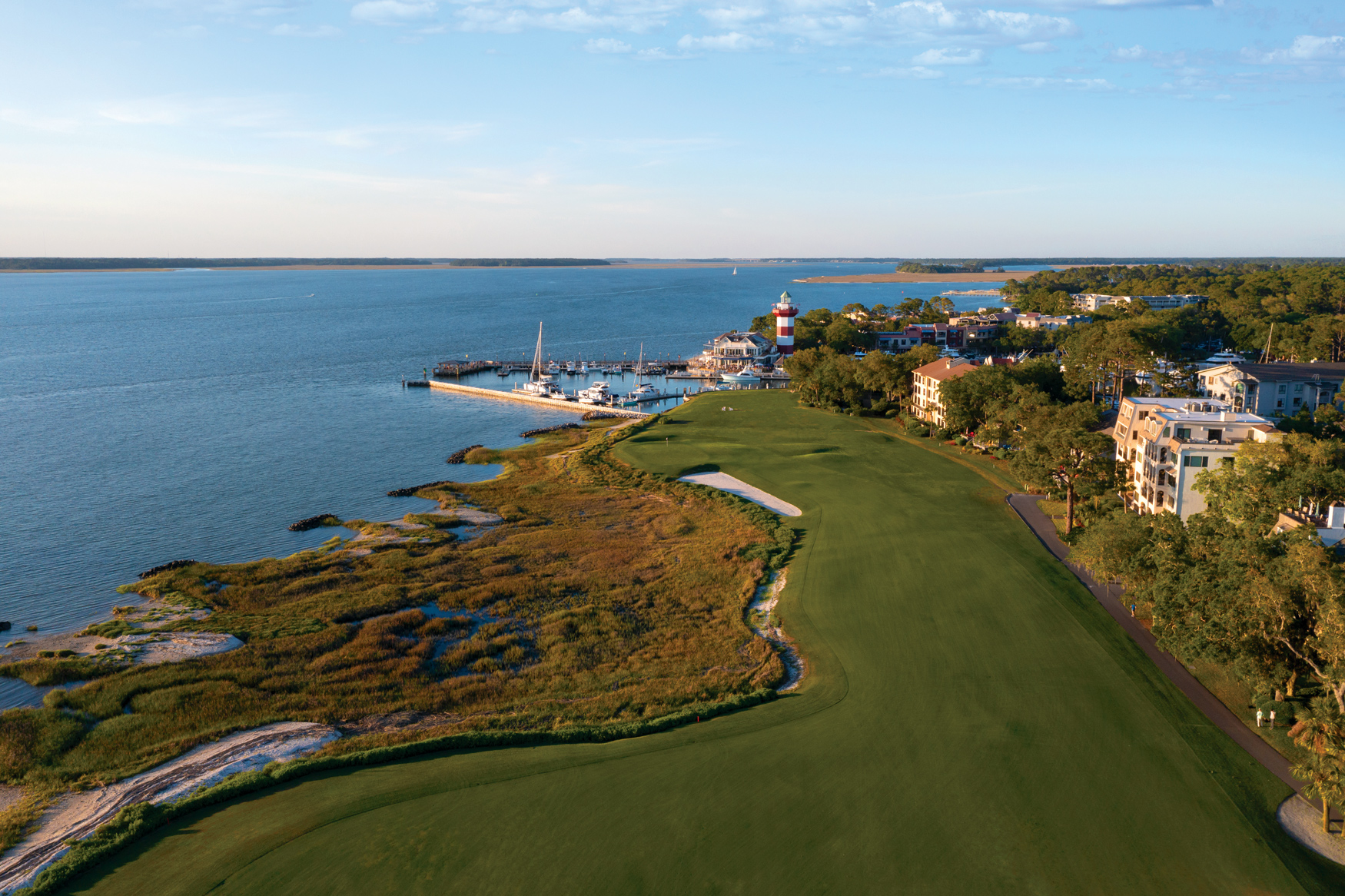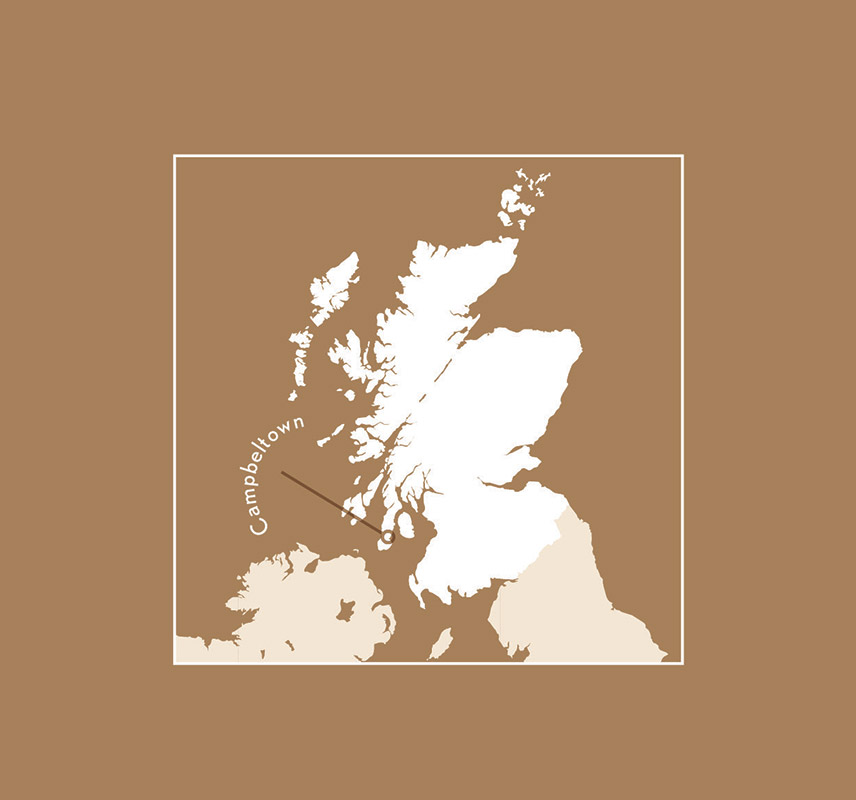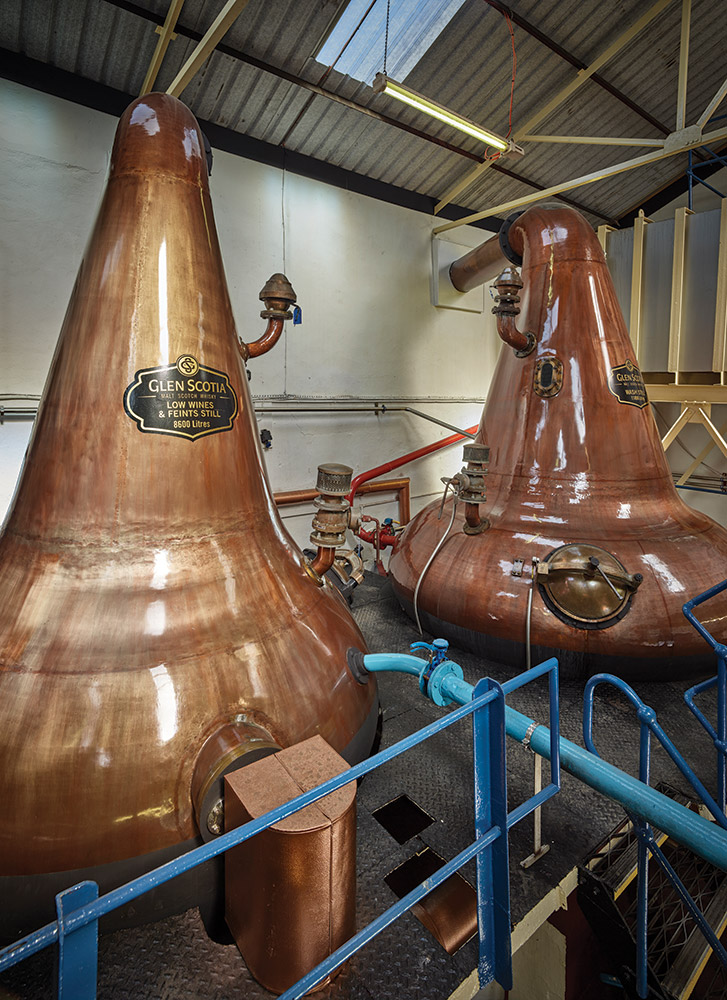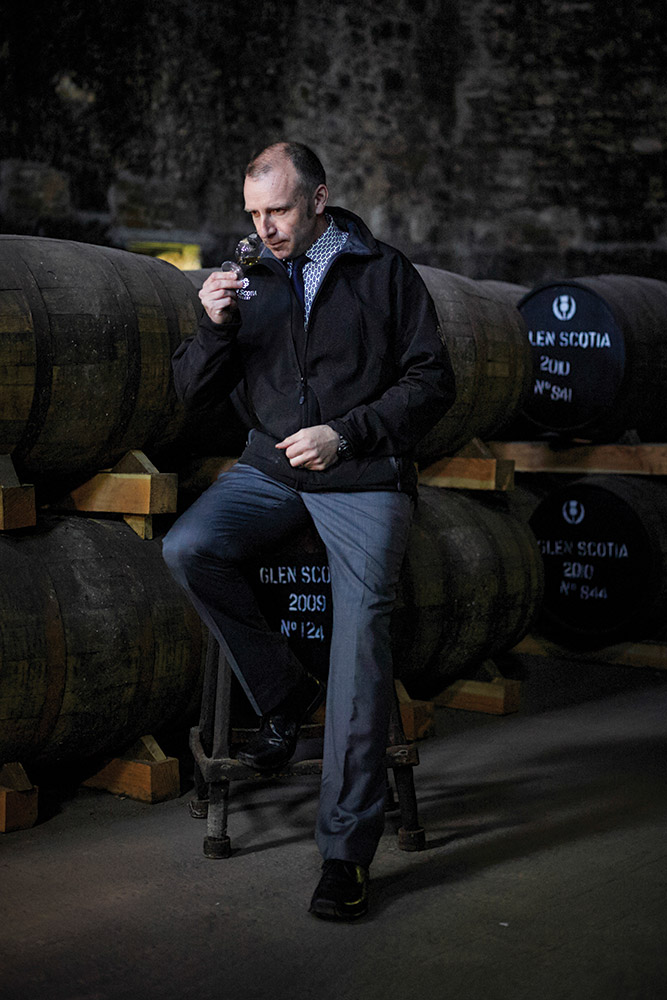
In a remote corner of the Kintyre peninsula, the Scottish town of Campbeltown was easily forgotten for a couple generations when its distilleries all but closed down. But as Robin Barwick discovered, a new lease of life has dawned as its single malts are back in demand
Not many people can pinpoint Campbeltown on a map. It is only 35 miles to the south west of Glasgow yet it remains one of the most remote towns in the UK. Campbeltown sits at the southern end of the Kintyre peninsula, which stretches out from the Scottish mainland, around the Isle of Arran and down to where the waters of the Firth of Clyde (from the east) and the Irish Sea (from the south) meet the Atlantic (from the west).

By land, Campbeltown is a 140-mile drive from Glasgow and one of the most stunning journeys you can make. The three-hour trek passes by the western flank of Loch Lomond before heading west and past the northern end of Loch Long, and then south, down the western shore of Loch Fyne and through the historic town of Inveraray. The heavily wooded hills of this Argyll region rise steeply from the loch shores to create one striking postcard scene after another. After skimming past the sandy beaches along the Atlantic coast, the one road south eventually reaches the modest outpost of Campbeltown.
“The remoteness here gives you a sense of community,” starts Iain McAlister, who is Campbeltown born and bred and distillery manager of the harbor town’s Glen Scotia whisky distillery, which was founded in 1832.
“But going back to the 19th century the town would not have felt isolated at all thanks to the whisky industry, the herring fishing and trade with the Americas, and there were continual connections with Glasgow via steam ships. You could jump on a steam ship right in the heart of Glasgow and be in Campbeltown within two and a half hours—quicker than it takes to drive here today.”

Campbeltown has a population of 6,000 today and three distilleries—Glen Scotia, Springbank and Glengyle—but at the turn of the 19th century it had a population of 9,000 thanks to a thriving industry of 36 distilleries. It may have been at the end of the road to nowhere but it was the whisky capital of the world, and strategically placed for the ships out of Glasgow to make an early stop before enduring the Atlantic crossing. The ships carried whisky out west and returned home laden with tobacco.
Distilling in Campbeltown dates back to the beginning of the 17th century at the very least, and probably far earlier, but the late 19th century was the town’s distilling heyday. With the turn of the 20th century came the First World War, the Great Depression and the emergence of Speyside—near Inverness in Scotland’s northeast—as a center of whisky production. The whisky trade of Campbeltown suffered a rapid decline but today, as single malts are enjoying a revival against blended whiskies—with the tastes of discerning consumers becoming ever more sophisticated—so Campbeltown is enjoying resurgence.

“You get oiliness, maritime influence and saltiness in all Campbeltown whiskies,” adds McAlister, whose distillery is just a short walk from Springbank, the town’s other grandee, also dating back to the mid 19th century. “With Glen Scotia you think of a perfect nose and light oily balance, elegant yet flavorsome. Spicy, rich notes come through, with a slightly salty finish.”
Glen Scotia offers seven core single malts, ranging from the award-winning Double Cask to the 1832 Campbeltown 25-year-old, for the collector. This starts out in refill bourbon casks and culminates in fresh bourbon barrels and leads to hints of exotic spices and fresh citrus fruits.

Not to be missed is Glen Scotia’s Victoriana, which is a throwback to the Campbeltown malts of the turn of the 20th century.
“Our Victoriana is unique,” says McAlister as he rolls a dram around a tasting glass. “We take the 12-year-old Glen Scotia and put 30 percent of it into sherry casks and 70 percent into [American white oak] bourbon barrels with a deep, deep char. We leave the casks for 12 months before bringing the two together, and then leave it for another six months in vats before bottling.
“The deep char of the casks gives the Victoriana its beautiful, dark color and it comes with a fantastic sherry sweetness and richness.”
Those who venture to Campbeltown will be welcomed for tours and tastings at all three distilleries. The annual Campbeltown Malts Festival takes place over three days each May for those who really want to explore the depths of the Campbeltown flavor profiles, while the town’s Ardshiel whisky bar is the ideal spot to reflect on the craft of distilling the finest single malts and to toast good health. “Slainte”, as goes the Gaelic tradition [pronounced “Slan-ja”].

Follow Us On


| Cookie | Duration | Description |
|---|---|---|
| cookielawinfo-checkbox-analytics | 11 months | This cookie is set by GDPR Cookie Consent plugin. The cookie is used to store the user consent for the cookies in the category "Analytics". |
| cookielawinfo-checkbox-functional | 11 months | The cookie is set by GDPR cookie consent to record the user consent for the cookies in the category "Functional". |
| cookielawinfo-checkbox-necessary | 11 months | This cookie is set by GDPR Cookie Consent plugin. The cookies is used to store the user consent for the cookies in the category "Necessary". |
| cookielawinfo-checkbox-others | 11 months | This cookie is set by GDPR Cookie Consent plugin. The cookie is used to store the user consent for the cookies in the category "Other. |
| cookielawinfo-checkbox-performance | 11 months | This cookie is set by GDPR Cookie Consent plugin. The cookie is used to store the user consent for the cookies in the category "Performance". |
| viewed_cookie_policy | 11 months | The cookie is set by the GDPR Cookie Consent plugin and is used to store whether or not user has consented to the use of cookies. It does not store any personal data. |